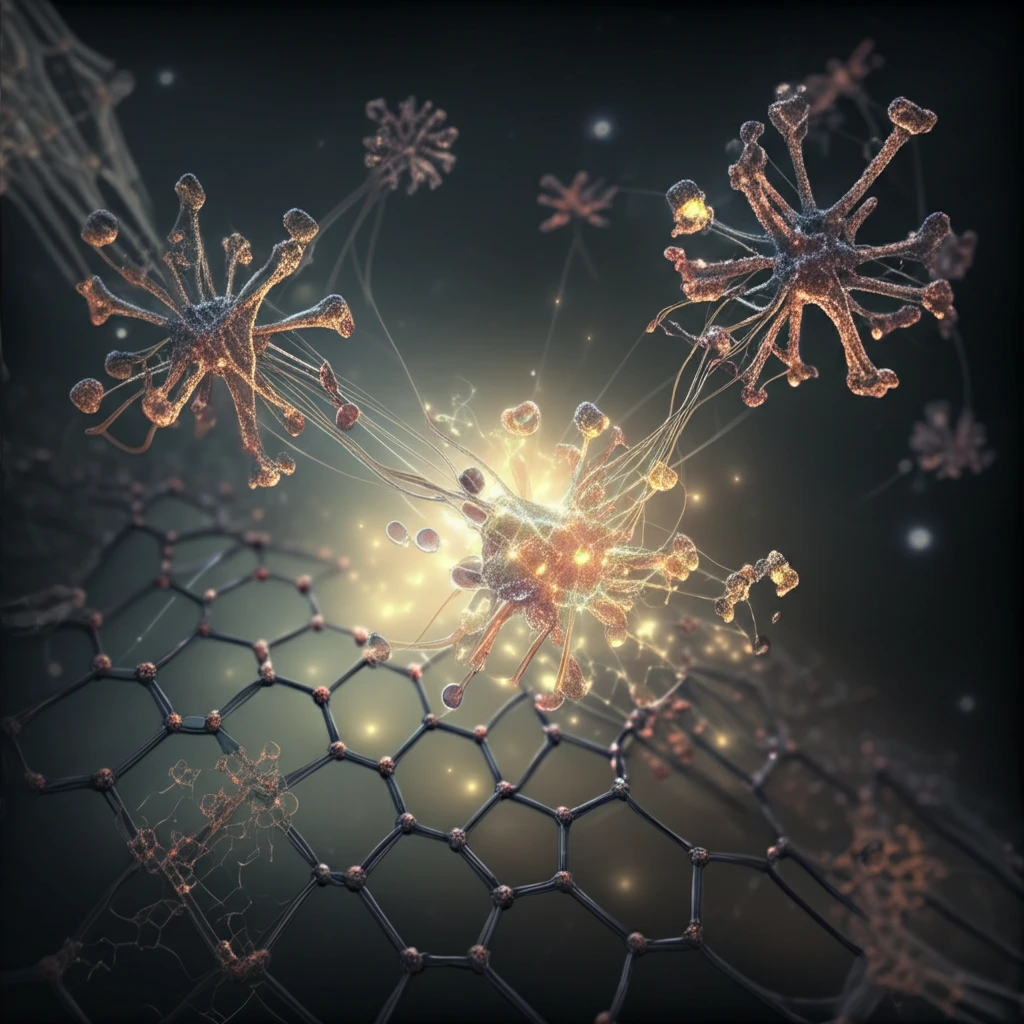
Unlock the Power of Protein Kinase Analysis: A Cutting-Edge Electrochemical Assay
"Discover how a novel nanocomposite material is revolutionizing the detection of protein kinase activity for disease diagnosis and drug discovery."
Protein kinases are enzymes that play a critical role in cell signaling by catalyzing protein phosphorylation, a process vital for regulating numerous essential cellular functions. Aberrant protein kinase activity is implicated in a wide array of diseases, including cancer, immune deficiencies, neurodegenerative disorders, and endocrinological issues. Therefore, accurate identification and analysis of protein kinase activity are crucial for understanding disease mechanisms, developing diagnostic tools, and discovering new drugs.
Traditional methods for analyzing protein kinase activity are often complex and costly, involving radioactive labels or specialized reagents. These methods also sometimes lack the sensitivity needed for early disease detection and effective drug screening. Electrochemical methods, known for their stability and good sensitivity, offer an attractive alternative, but improving their simplicity and sensitivity remains a significant challenge.
Recent research has introduced an innovative solution, leveraging a novel nanocomposite material to enhance the detection of protein kinase activity. This approach simplifies the process and significantly boosts sensitivity, opening new possibilities for disease diagnosis and drug discovery.
Revolutionary Nanocomposite for Enhanced Detection

A team of scientists has developed a groundbreaking electrochemical biosensing method using a reduced graphene oxide-zirconium dioxide-thionine (rGO-ZrO2-Thi) nanocomposite. This unique material acts as an all-in-one platform, integrating phosphopeptide recognition, signal amplification, and reporting into a single, streamlined process. The nanocomposite is synthesized through a hydrothermal reaction, combining the excellent conductivity of reduced graphene oxide (rGO) with the phosphate-binding capabilities of zirconium dioxide (ZrO2) nanoparticles and the electrochemical signaling of thionine.
- Specific Recognition: ZrO2 nanoparticles selectively bind to phosphorylated peptides.
- Signal Amplification: Abundant thionine molecules on the rGO surface enhance the electrochemical signal.
- Excellent Conductivity: rGO facilitates efficient electron transfer, improving sensitivity.
- Simplified Analysis: The nanocomposite enables label-free, one-step electrochemical analysis of kemptide phosphorylation.
Future Implications
The development of this novel rGO-ZrO2-Thi nanocomposite represents a significant advancement in protein kinase activity analysis. Its simplicity, high sensitivity, and versatility make it a valuable tool for a wide range of applications, from basic research to clinical diagnostics and drug discovery. By providing a more efficient and accurate method for detecting and analyzing protein kinase activity, this technology promises to accelerate our understanding of disease mechanisms and facilitate the development of new therapies.
